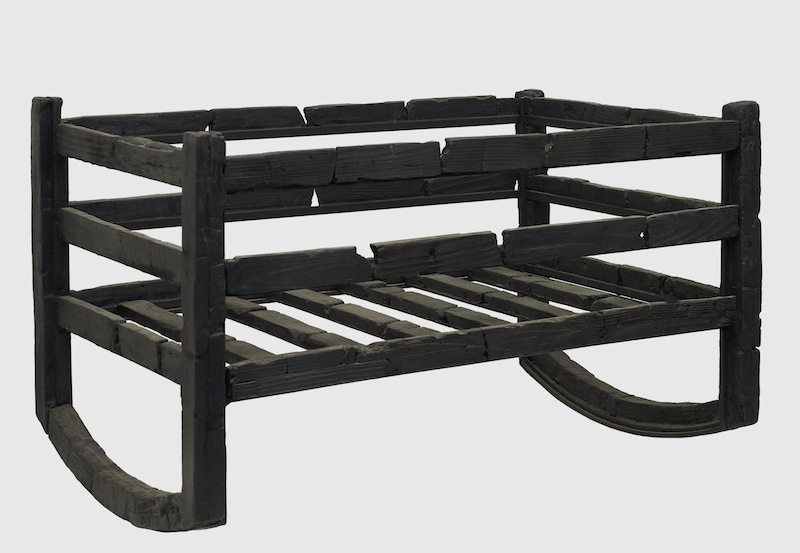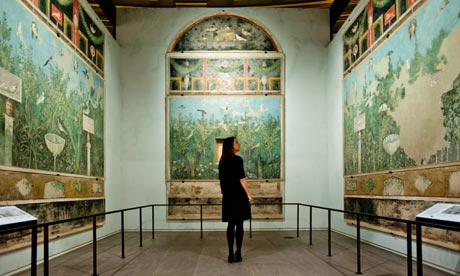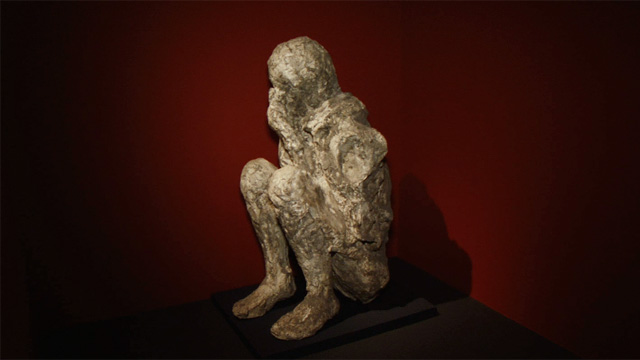There is a blockbuster exhibition on at the British Museum now on Pompeii and Herculaneum - I've been meaning to go forever but have just now gotten around to it now that classes are over.
I have to admit, I've never really been excited and inspired by ancient Greek or Roman art/culture/etc...I've read my Cicero and I've studied the architecture, but never took time to appreciate the art, believing (naively) that really "good" art was only produced post-Renaissance. Well...this goes to show that even if you don't think you're interested in something, it is worth exposing yourself to new things and giving everything a chance.
I was beyond impressed by the exhibition - it was actually emotionally moving (and I don't say that lightly!) as well as incredibly informative.
The exhibition starts out with a case enclosing this dog - twisted and contorted in agony because he was left tied to a post outside a house. You cannot help but feel a tug at your heartstrings. Pieces like this - casts which were made from pouring plaster into the cavities of ash left from the eruption - are what make the atmosphere come alive.
While the images of death are incredibly moving, most of the exhibition is actually related to life - life of the Romans who lived in Pompeii and Herculaneum. One of the greatest ironies about the eruption of Vesuvius is that had it not been for this devastating event, we simply would not know nearly as much as we do about everyday life in that culture as we do now. Apparently, more frescoes exist in Pompeii and Herculaneum than the rest of the Roman world put together because they were preserved in this ash.
Most of the exhibition is dedicated to recreating a house that would have belonged to a wealthy individual from one of these societies. One walks from the atrium, where the finest furniture and ornaments were displayed, into the interior where there are bedrooms and smaller rooms for specific purposes (kitchen, garden, etc). Objects are placed in the spaces they would have originally occupied. This gives one a glimpse into the daily routines, eating/drinking habits, politics, jokes/sense of humor, friends, family, and even sexual habits (I had nooo idea how explicit some of their frescoes were!) and really transports one back in time.
Here are a few objects I found particularly interesting...first, jewelry! I would totally wear that. It was found next to a woman who had been buried in the ash - she was clearly wearing it at the time of her death.

A cradle - it may be hard to see in the picture, but it is literally made out of wood instantly carbonized and seems like it would fall apart at the slightest touch - I have no idea how they transported that from Italy to Britain while keeping it intact.

This was the garden area - again, no idea how they transported these frescoed walls to England, but amazing that they did it. These would have been on the walls of the inner garden courtyard.

and here is one of the bedroom frescoes...see what I mean?!
A marine life mosaic

a drunk and peeing Hercules marble statue

a floor mosaic showing a skeleton holding wine jugs

Then we came to the bodies...chilling yet touching at the same time. This poor family was at least together at the end, untied in terror and pain. The child leaping out of his mother's lap is captured mid-jump while the second child lays nearby.

This one is also heartbreaking.

There is a second message to the exhibition beyond the obvious academic and entertainment purposes...there have been a myriad of stories in the news lately relating to the ancient Roman buildings in Pompeii falling into ruin. The exhibition is meant to remind the world of Pompeii's importance and highlight the need to preserve it more carefully.
All in all, I like the way this reviewer characterized the exhibition as a whole...
you can't not love the Romans after seeing this exhibition. They are such an intimate mirror of ourselves. The reason Pompeii and Herculaneum fascinate is not just the preservation of an entire world in a moment of mass extinction, but the uncanny way that world reflects our own. Through a combination of slavery and hydraulic engineering, free Romans lived like modern people, surrounded by consumer goods and ingenious comforts...it is a glimpse of a world that is the same yet other.


No comments:
Post a Comment